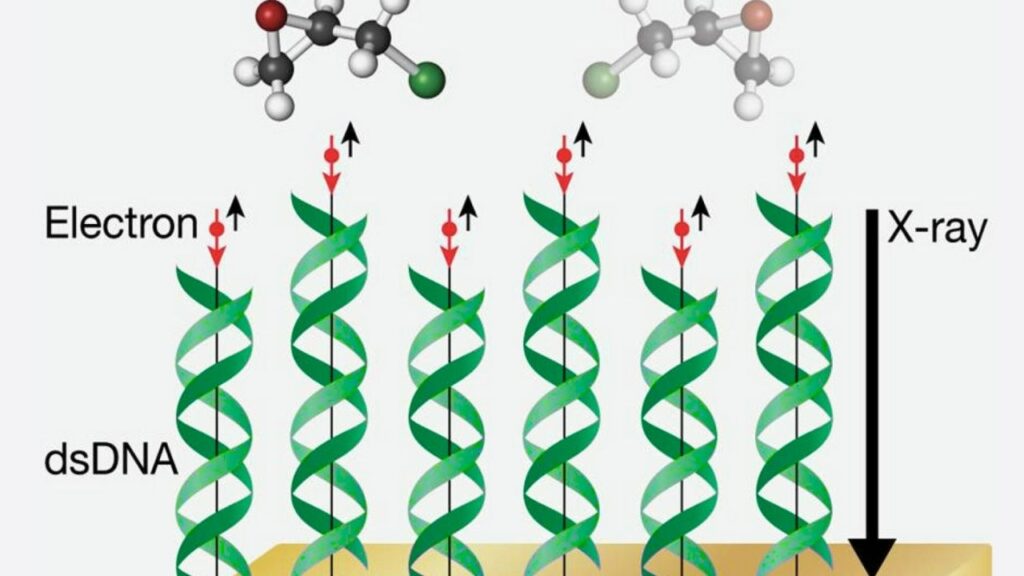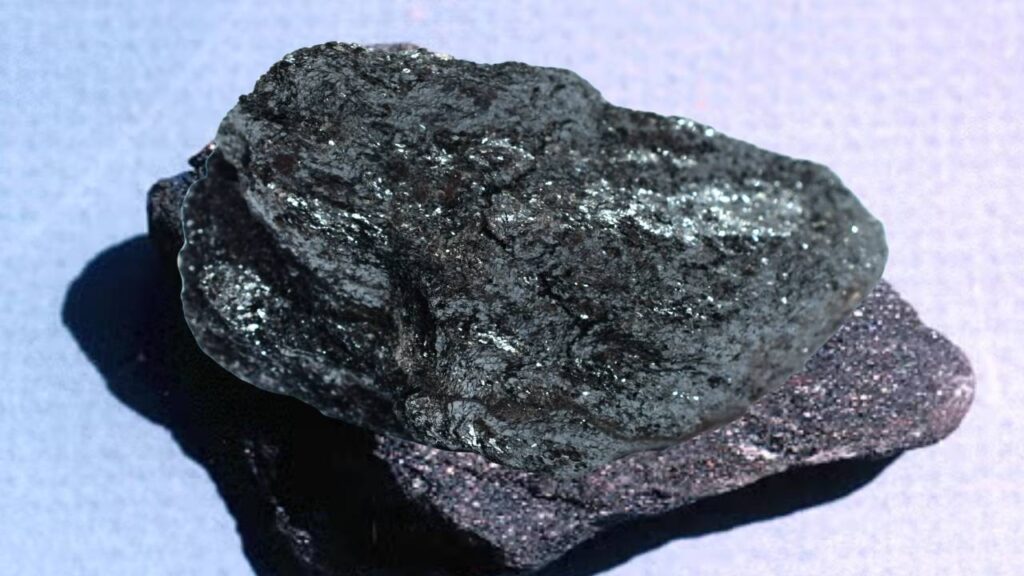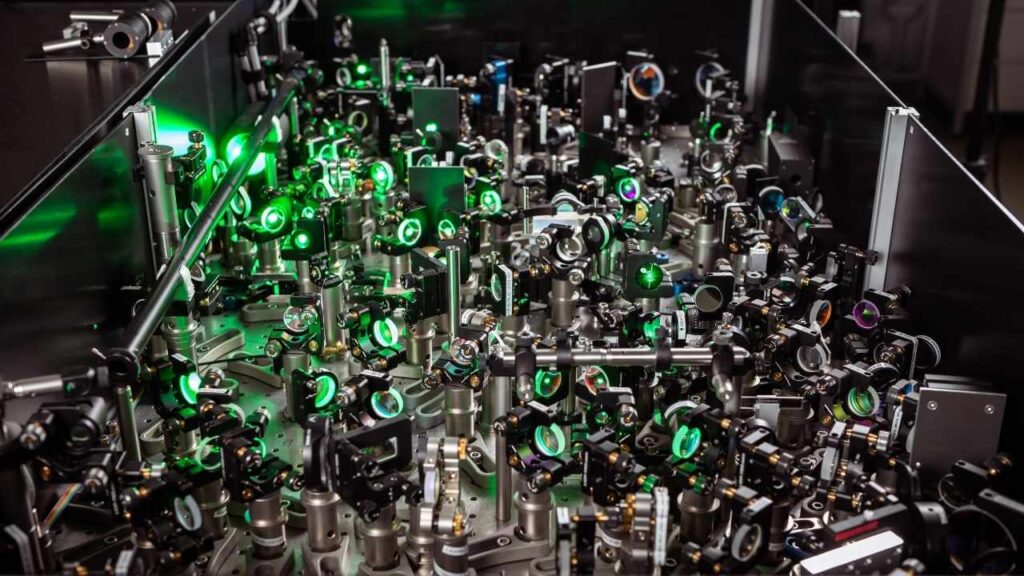Imagine being able to change the fundamental magnetic properties of a material just by shining light on it—no chemicals, no heating to extreme temperatures, no complicated machinery. Scientists at the University of Konstanz have recently accomplished exactly this, by rewriting the “magnetic DNA” of a material using laser pulses. This breakthrough promises to revolutionize data storage, quantum computing, and various high-tech industries by allowing ultrafast and energy-efficient control of materials.

Table of Contents
What Is Magnetic DNA?
Just as DNA carries the unique genetic code that determines a living organism’s traits, the term magnetic DNA refers to a material’s unique magnetic fingerprint—its intrinsic magnetic properties that dictate how it behaves under magnetic fields. Changing this fingerprint temporarily rewrites how the material acts magnetically, unlocking entirely new behaviors without altering the chemical composition.

How Did Scientists Rewrite Magnetic DNA?
The research team, led by physicist Davide Bossini, used precisely controlled laser pulses to excite pairs of tiny magnetic waves called magnons within a crystal at room temperature. Magnons are collective vibrations of electron spins in a material—imagine millions of tiny magnets creating coordinated magnetic waves traveling through the crystal.
By exciting pairs of magnons with terahertz-frequency light pulses, the scientists altered the frequencies and amplitudes of other magnons in the material. This non-thermal process changes the magnetic fingerprint of the material—temporarily transforming it as if its magnetic DNA was rewritten. Importantly, this is done without heating the material, which avoids the energy losses and damages typically caused by heat.
They demonstrated this method using hematite — a naturally occurring iron ore commonly found in nature and historically used in compasses. The choice of such an abundant material makes the technology more practical and scalable.

Scientists Rewrite a Material’s Magnetic DNA Using Light
| Aspect | Details |
|---|---|
| Research Institution | University of Konstanz |
| Lead Scientist | Davide Bossini |
| Material Used | Hematite (Iron ore, naturally occurring) |
| Technique | Laser pulses excite magnon pairs at terahertz frequencies |
| Operating Conditions | Room temperature, non-thermal (no heating involved) |
| Applications | Ultrafast data storage, quantum computing, high-speed information transmission |
| Publication | Science Advances, June 2025 |
| Official URL | University of Konstanz Research |
Scientists at the University of Konstanz have pioneered a transformative technique to rewrite the magnetic DNA of materials using only light. Their laser pulse method excites magnetic waves called magnons to non-thermally change magnetic properties at room temperature in commonly available crystals like hematite.

This innovative discovery could revolutionize data storage, transmission, and quantum computing by enabling ultrafast, energy-efficient control of magnetic materials without expensive or harsh conditions. As the research evolves, we can anticipate the emergence of new devices and technologies shaping our data-driven future.
Why Is This Breakthrough Important?
Traditionally, modifying the magnetic properties of materials required harsh conditions such as extreme heat, complex chemical treatments, or rare, expensive elements. This new light-based method:
- Is energy-efficient: Because it does not rely on heat, it avoids energy waste and overheating problems common to electronic devices.
- Allows ultrafast changes: Operating at terahertz frequencies means the magnetic properties can be switched extremely quickly.
- Works at room temperature: It removes the need for cryogenic cooling, which is usually required in quantum experiments.
- Uses common materials: Employing inexpensive, naturally occurring crystals means the technology can be widely adopted.
These capabilities open exciting avenues for rethinking information technology, solid-state devices, and quantum computing in practical, accessible ways.
How Could This Affect Everyday Technology?
Though still fundamental research, this discovery has the potential to transform technologies we use daily:
- Data Storage and Transmission: Devices like hard drives and fiber optic systems are limited by heat production and speed. This light-driven magnon control could make information transfer faster and cooler, enhancing performance.
- Quantum Computing: The non-thermal control of magnetism at room temperature may lead to more robust, practical quantum bits (qubits), accelerating the development of quantum computers.
- Artificial Intelligence (AI) & Internet of Things (IoT): Both generate massive data, creating bottlenecks. Materials that handle information swiftly and efficiently help overcome those challenges.
Practical Guide: How Scientists Rewrite Magnetic DNA Using Light
Step 1: Selecting the Material
Scientists begin with a crystal such as hematite, chosen for its well-understood magnetic properties and natural abundance, making it ideal for experimentation and future applications.
Step 2: Applying Laser Pulses
They deliver extremely brief, carefully timed laser pulses at terahertz frequencies that precisely excite pairs of magnons within the crystal.
Step 3: Manipulating Magnon Interactions
The excited magnons interact with others, changing their frequencies and amplitudes. This coherent control tweaks the material’s magnetic fingerprint, effectively rewriting its magnetic DNA.
Step 4: Measuring Magnetic Changes
Using advanced sensors, researchers observe and confirm the temporary alteration in magnetic properties, ensuring that the effect is non-thermal and reversible.
Step 5: Exploring Applications
Scientists then experiment with using these effects in real-world scenarios like data storage devices and quantum computing hardware, aiming to harness the speed, efficiency, and room-temperature operation of this method.
New Quantum State Discovery Set to Revolutionize Material Science Worldwide
FAQs About Scientists Rewrite a Material’s Magnetic DNA Using Light
Q1: What are magnons?
Magnons are collective waves of electron spins—tiny magnetic moments—traveling through a material. Acting somewhat like electrons, they can carry and store information but tend to produce less heat, making them attractive for future technologies.
Q2: How long do the magnetic changes last?
The changes are temporary and revert after a short time. However, rapid repeated switching is possible, enabling ultrafast data processing and transmission applications.
Q3: Is this limited to hematite crystals?
While hematite was used in this research, the methodology could apply to other magnetic materials pending further investigation and adaptation.
Q4: Does the technique require rare or costly materials?
No—it uses common, naturally occurring materials like hematite, making it cost-effective and accessible.
Q5: Can this technology replace current data storage methods immediately?
Not yet, but it paves the way toward future faster, energy-efficient data storage and processing technologies that may complement or supersede existing ones.
What’s Next for This Research?
This breakthrough opens many doors for further exploration:
- Expanding Material Choices: Testing additional crystals and compounds to broaden applications.
- Device Development: Integrating this light-controlled magnetic switching into prototypes for real-world tech.
- Quantum Material Studies: Studying how these non-thermal effects can advance quantum state control and quantum information technologies.
- Energy Saving Technologies: Pursuing greener electronics with ultralow energy requirements.
The ability to control material magnetism so swiftly and efficiently heralds a new era in material science and technology innovation.



















